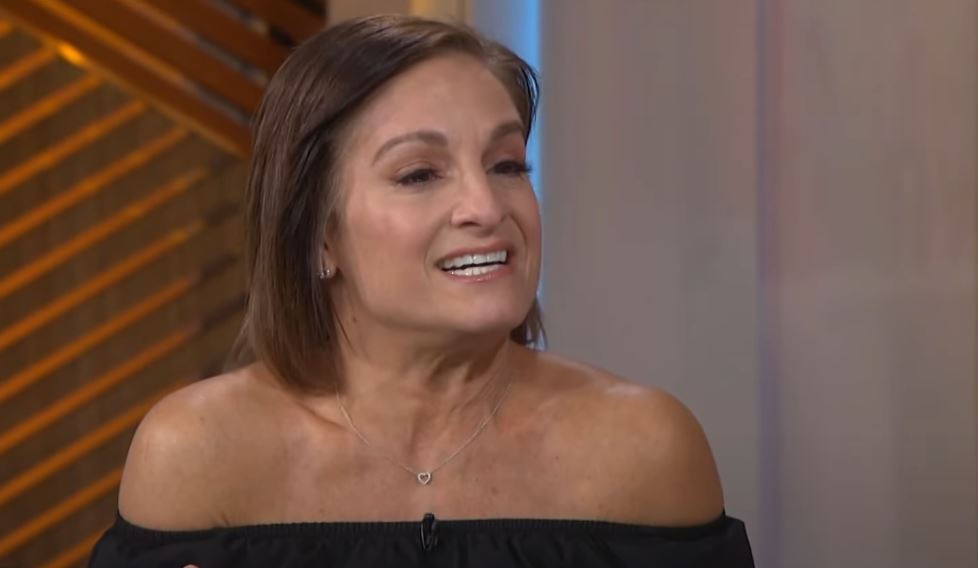Mary Lou Retton enthralled a generation in 1984 when she won a gold medal at the Olympics in Los Angeles at the age of sixteen. Her flawless vault became a landmark in culture. She quickly rose to prominence as a sought-after face for endorsements, most notably on Wheaties boxes. However, Retton’s current financial situation is surprisingly modest given her notoriety and accolades. Her estimated net worth by 2025 is close to $1 million, a sum that has garnered a lot of attention in the wake of her recent public health crisis.
McKenna, Retton’s daughter, revealed the heartbreaking fact that her mother did not have health insurance while she was in the hospital in late 2023. A GoFundMe campaign that raised over $459,000 in response to this revelation demonstrated the vulnerability of financial security as well as the compassion of the public. Amazingly, this Olympic legend—once seen as a symbol of achievement—had to deal with growing medical expenses on her own. In addition to helping with immediate expenses, the fundraiser sparked broader conversations about the affordability of healthcare, particularly for older athletes with chronic health issues.
Mary Lou Retton – Personal and Financial Overview
| Detail | Information |
|---|---|
| Full Name | Mary Lou Retton |
| Date of Birth | January 24, 1968 |
| Age (2025) | 57 |
| Hometown | Fairmont, West Virginia, USA |
| Occupation | Former Olympic Gymnast, Motivational Speaker, TV Personality |
| Olympic Medals | 1 Gold, 2 Silver, 2 Bronze (1984 Summer Olympics) |
| Estimated Net Worth (2025) | $1 million (reported range: $1M to $8M) |
| Key Endorsements | Wheaties, Revco, Colonial Penn, Australian Dream |
| Notable Asset Division | $2M divorce settlement including property and luxury vehicle |
| Family | Four daughters: Shayla, McKenna, Skyla, Emma |
| Current Residence | Boerne, Texas |
Retton had previously established a revenue stream through public speaking by utilizing her Olympic fame, reportedly earning up to $25,000 per event. However, these opportunities were greatly diminished during the pandemic years. Her revenue plummeted as live appearances were canceled and brand deals shrank. Many people were perplexed by this financial change and wondered how an American sports icon, who had been in the public eye for decades, could have become so in need.
Another significant financial turning point was her divorce from Shannon Kelley in 2018. She received almost $2 million in cash and property, including a Porsche Panamera and the family home, as part of the settlement. However, it was expensive to maintain a lifestyle and real estate after a divorce. Perceptions of her stability were significantly damaged when one of her properties in Texas was subject to a lien for unpaid HOA dues. This brought to light the fact that continuing obligations can quickly deplete even sizable settlements.
Retton’s financial trajectory is remarkably similar to that of other former athletes who achieved notoriety prior to the digital era. Gymnasts like Simone Biles can now make money from clothing brands, Netflix series, and social media. However, Retton had fewer opportunities to use branding to create lasting wealth because he retired by the age of 18. She depended on conventional endorsement agreements, which were profitable but lacked the recurring income streams that influencers and contemporary sports entrepreneurs currently enjoy.
Retton maintained a high profile in the public eye and media despite her early retirement. She appeared in movies and TV series like Naked Gun 33⅓ and Scrooged. She continued to be present in 2018 when she joined Dancing with the Stars. Consistent income was still elusive, though. Gymnasts frequently forge their post-career paths on their own, in contrast to athletes in leagues like the NBA or NFL, where pensions and player associations provide structure.
Her story took an unexpected turn in 2025 when she was arrested for DUI. In response to being charged and fined in West Virginia, she made a sincere declaration: “I make no excuses.” Her fans responded favorably to her candor. It made her more relatable rather than less respectable. Even though it was challenging, this instance demonstrated a new degree of openness and served as a reminder to the public that even people who once exemplified perfection have personal struggles.
Few American gymnasts from the 1980s and 1990s were able to attain long-term financial independence, as evidenced by comparisons with peers like Kerri Strug and Dominique Moceanu in recent years. Some, like Retton, struggled with health concerns, family obligations, and decreased media demand, while others moved into coaching or commentary. For athletes whose careers frequently peak before their twenties, her situation serves as a reminder of the importance of strategic planning and diversified income.
Additionally, her story raises more general social issues. Americans continue to struggle with access to healthcare, and Retton’s story—despite being widely reported—echoes the experiences of innumerable others who are overburdened by expenses. The success of her fundraiser was comforting, but the root cause is still unsolved. By drawing attention to her lack of coverage, the incident acted as a warning and a call to action for changes that would benefit both well-known people and regular people.



